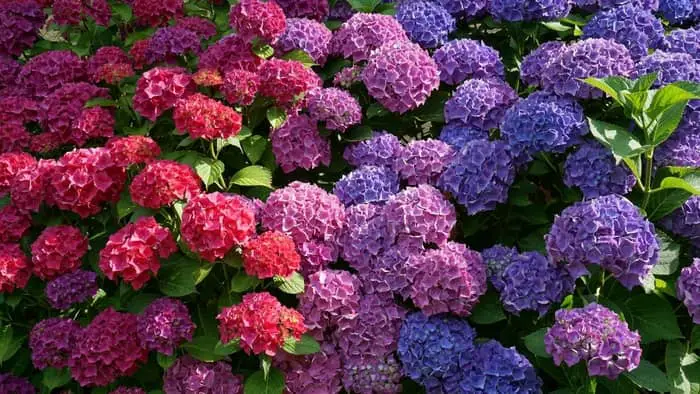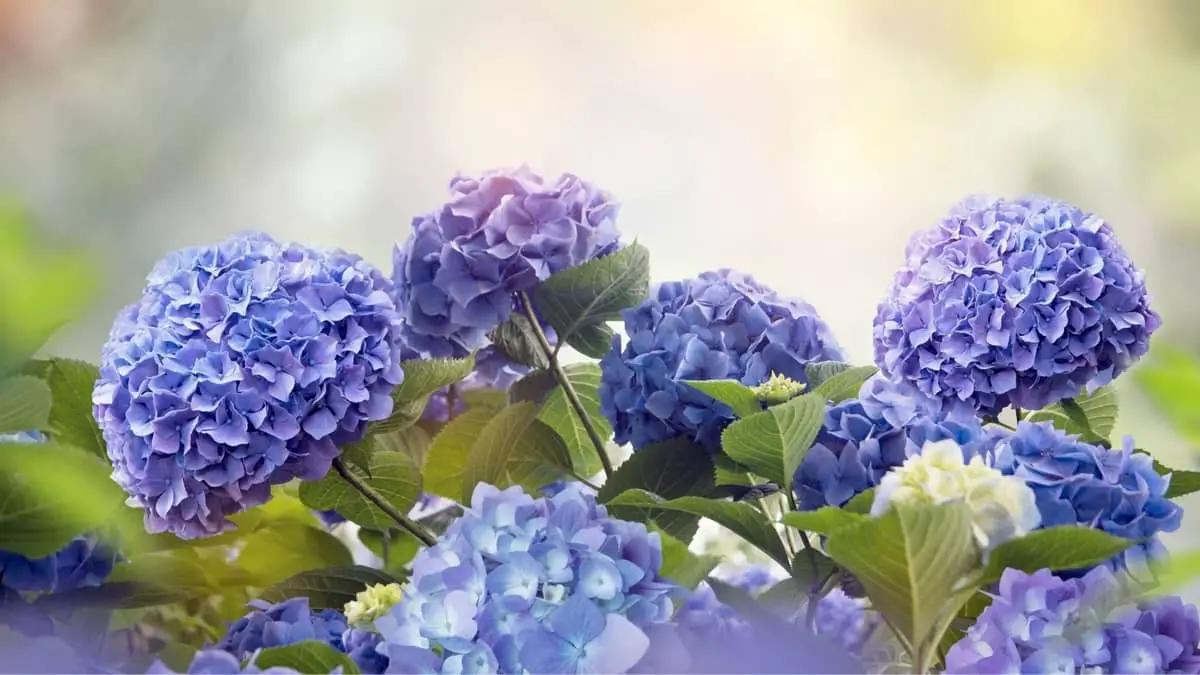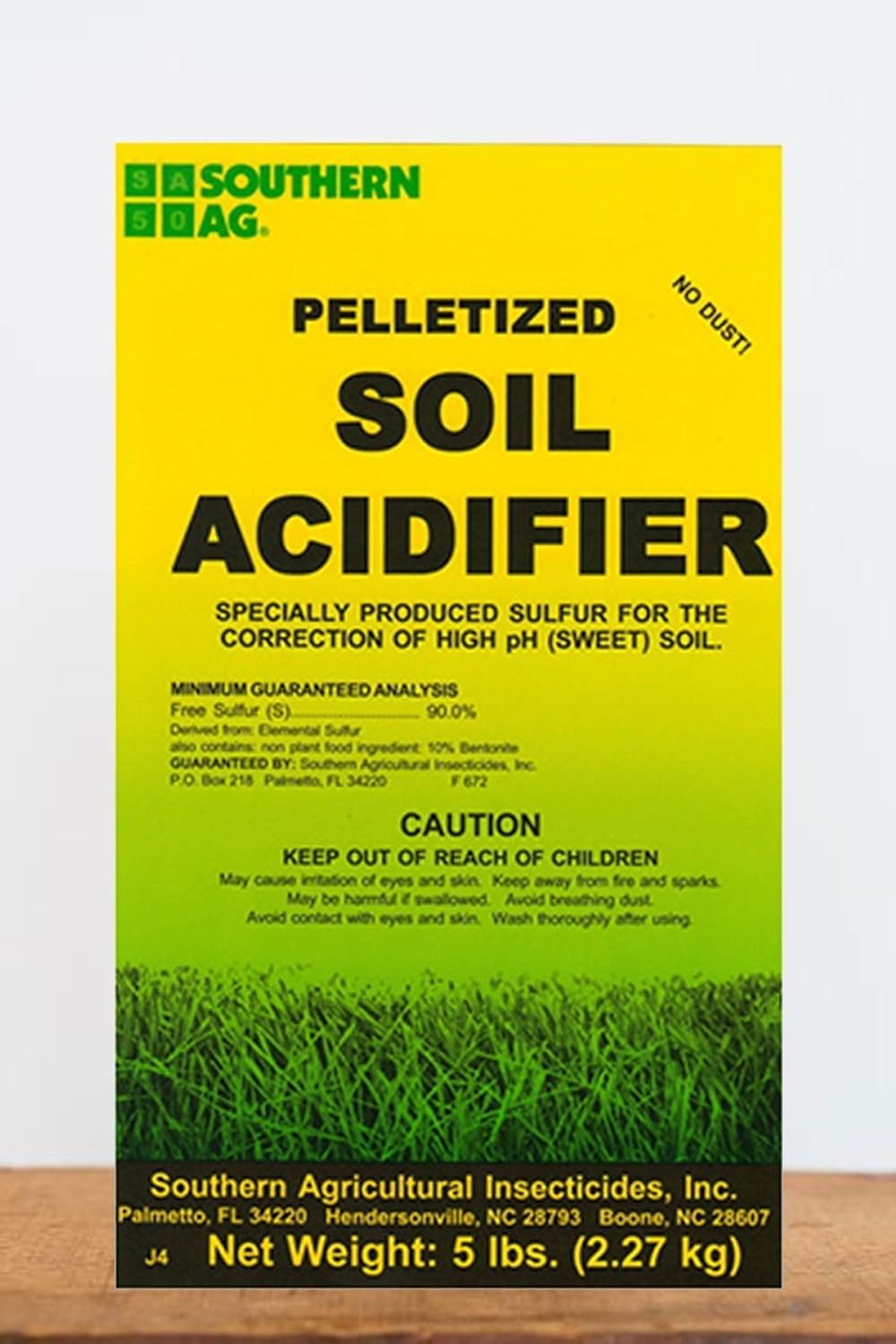Last Updated on July 31, 2022 by Griselda M.
We can change the color of hydrangeas by adjusting soil pH. How long does this process take? We’ll discuss this and much more in the article below.
What Are Hydrangeas?
Hydrangeas are perennial flowering shrubs and plants. They belong to the genus Hydrangea. Hydrangeas are one of the oldest and most commonly cultivated ornamental flowers. They are popular garden plants, being very easy to grow and requiring little care.
There are many varieties of hydrangea. Some hydrangeas have large leaves with long stems. The flowers of hydrangeas can be pink, white, blue, lavender, or purple. Many people love hydrangeas because they are so easy to grow and so hardy.
Many also enjoy growing their own hydrangeas in their garden. Hydrangeas are easy to grow and easy to maintain. The hydrangea has many different colors, so it is possible to find a variety that suits your taste. The colors also change depending on soil pH.
How Long Does It Take To Change Hydrangea Color?

Soil pH and Hydrangea Color
Hydrangeas have been bred to have many colors. However, no matter the color of your plant, the pH of the soil will influence the expression of this color. Let us have a look at the impact of pH on our hydrangeas.
When I was a kid, our country had an economic hardship and brought steam trains back into action due to a lack of forex to buy fuel. The steam trains burnt really bad coal, and the town has a misty morning climate. Before the steam trains, all the hydrangeas along the railway line in people’s gardens were pink to red in color. Within a few months after the return of the trains, the hydrangeas all turned from this color range to a blue/lavender blue.
What this meant is that the soil was originally at a pH of above neutral (7) and that as the acid rain from the sulfur in the train smoke chanced the soil pH, this dropped to below pH 6 promoting the blue/lavender colors.
You can easily shift the pH of your soil with a sulfur additive such as this one. This will actually mimic that action of the acid rain from the train and drop your soil pH. Be careful and add it slowly. The effects should take a few weeks to become noticeable.
If you want to go the other way and bring out more of the pink colors you can add garden lime, and you will probably also need to add an iron and micronutrient supplement as your plants can become iron deficient at higher pH. The addition of the above-chelated iron and micronutrients is quite important – chelating agents make mineral nutrients more available to plants, and as soil pH increases, hydrangeas become less likely to be able to absorb non-chelated minerals. So this is a hack that allows us to play with colors a bit more without killing our plants.
Hydrangeas are also easy to grow and quite hardy. They bloom on the previous season’s growth, so you will get flowers most likely in the second year after planting. However, I have planted large plants that I dug up and had blooms a few months later!
Location
Hydrangeas need a sunny location with good air circulation. To ensure a long flowering season, you should plant the hydrangeas in a spot that will get full sun all day. If you put them in a shaded spot, they may not flower as well. If you water the hydrangeas frequently, they’ll grow quickly and produce lots of blooms.
Planting
Make sure you buy healthy plants. Look for bright green leaves, and make sure the roots are firm and not mushy. Plant the hydrangeas in full sun or light shade. Place the hydrangeas in holes that are at least 2 inches deep. You can use a spade or a trowel to dig the holes. Fill the hole with some soil, add a small amount of fertilizer, and then place the hydrangeas.
Water the plants regularly
If your plants are not getting enough water, they will not grow well. Water the plants as needed to maintain slightly moist soil. Be careful not to overwater them. If you live in an area where there is snow on the ground during the winter, the hydrangeas may need to be brought indoors until spring.
Maintenance
To keep your hydrangeas looking good, trim back the tops of the plants. This will encourage new growth. Trimming also helps the plants stay healthy.
Pests
Keep your plants free of pests. Watch for aphids, mealybugs, and slugs. Spray your plants with insecticides such as neem oil spray if you see any pests.
When to remove flowers?
Remove the flowers when they start looking bad. Cut the flowers off at the base of the stems. I just place the trimmed flowers on the ground below the plants as a mulch.
In Summary
You can adjust their color by changing pH. It is hard to predict accurately how long the color change will take but work on a few weeks to a month.
Hydrangeas are often very hardy and can withstand most climates. They grow best in full sun with moist soil. Hydrangeas will flower continuously throughout the season, even during the heat of summer. If you want a different color, look for new varieties or change the soil pH.
Read more about Is Growing Two Plants Together Possible?
Frequently Asked Questions
How can I make my hydrangeas blue faster?
Adjust your soil pH with a soil acidifer. This helps bring out the blue colors. Ideally you need a soil pH of 5.5 or lower.
Can you change the color of a hydrangea?
Yes. If you increase the soil pH you will shift into pinks and reds, and if you drop the soil pH you bring out blue colors.
How long does it take to turn flowers blue?
This will depend on the type of hydrangea you are growing. It takes a few weeks after the addition of soil pH amendments to see the color change.
How do I get my hydrangeas to turn purple?
If your soil pH is bewteen 5.5 and 6.5 you can expect purple tinges to your flowers.
Caroline is a gardener who loves to get down to the nitty–gritty of gardening. She proudly proclaims herself as a ‘dirt worshipper‘ and can often be found deep in the garden, covered in soil and singing to her plants. As a self–proclaimed ‘plant whisperer‘, Caroline believes that plants need love and attention just like any other living thing, and she loves to give them both. When she‘s not tending to her garden, you can often find her researching the latest gardening trends, or teaching others how to make their gardens thrive



